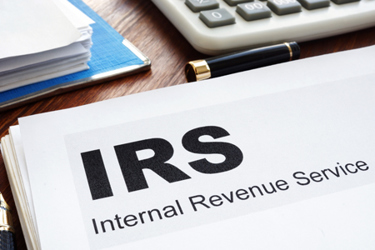A New Prescription For R&D Tax Credit Reporting
By Sophia V. Shah, CPA

The IRS has changed what must be reported upon filing a research and development (R&D) tax credit claim, and the impact is especially significant for the life sciences industry. The tax form used to claim the credit, Form 6765, “Credit for Increasing Research Activities,” has been revised to require more information starting in tax year 2024, with the full implementation effective in tax year 2025. The issue no longer is simply whether you are conducting qualified research; your tax strategy now must be ready to meet heightened compliance requirements. The new Form 6765 disclosures demand greater detail and transparency, meaning that your existing credit process cannot be assumed to stand up to the new requirements.
The IRS is requesting feedback on the form through June 30, 2025. The input it receives will help make clear the updated tax year 2025 instructions for how to complete the form.
What’s Changing For R&D Credit Reporting
Historically, Form 6765 focused on quantitative inputs for qualified wages, supplies, and third-party U.S.-based contractors, with qualitative project support maintained for audit readiness. The qualitative supports piece is changing, as much of the qualitative project information now must be submitted with the return, significantly increasing the standard of disclosure.
New requirements beginning in tax year 2024 include:
- Reporting the total number of business components (such as qualified R&D products or processes) generating qualified research expenses (QREs)
- Disclosing the amount of officer wages included as wage QREs
- Confirming whether the current claim is consistent with historical filings
- Indicating whether any part of the claim relies on the Accounting Standards Codification (ASC) Topic 730, “Research and Development,” as described later
Beginning in tax year 2025, companies — with the exception of eligible small businesses — will be required to complete the new “Section G,” which introduces a deeper level of required reporting, including:
- Identifying business components making up the top 80% of QREs or the top 50 business components
- Breaking down qualified wages into three categories: direct research, direct supervision, and direct support
- Providing additional details for any use of statistical sampling or for amended claims after the original return
Why Life Sciences Companies Face Unique Challenges
Life sciences companies conduct some of the most costly and complex research in any industry, from drug discovery, protocol development, clinical testing, device prototyping, regulatory-driven improvements, and more. But that same complexity creates risks. Cross-functional teams, shared resources, and external contractors make it challenging to produce the timely, defensible documentation that the IRS expects.
Coupled with recent court decisions, the IRS clearly is signaling that generic or retroactive justifications will not meet expectations. Without contemporaneous, well-aligned support that speaks directly to the tax definition of qualified research, even legitimate credits may be challenged, delayed, or denied.
The silver lining: companies that act now can build stronger processes that not only meet compliance expectations but that unlock greater credit value and substantiation over time.
The Bigger Picture
Strong R&D tax credit practices do more than meet IRS requirements — they also support investor confidence. In an industry where innovation is demanded and R&D is a large line item, stakeholders expect businesses to diligently support their incentives and tax attributes. Whether you are preparing for a funding round, audit committee review, or potential initial public offering, a well-supported R&D tax credit strengthens your financial narrative and reduces the risk of surprises during diligence.
What You Should Consider Now
1. Reassess Your R&D Tax Credit Process
With the IRS raising documentation expectations, now is the time to examine how and when your business captures and supports R&D tax credit claims. Many life sciences companies still rely on fragmented data collection across departments, which can lead to incomplete or foregone support of R&D tax credit claims. Your R&D credit process should support real-time documentation, cross-functional coordination, and a clear mapping between R&D activities and costs with projects, which now will be reported on Form 6765.
For companies that report R&D separately on their GAAP-audited financial statements and have appropriate internal controls support, the IRS’ ASC 730 directive might offer a strategic opportunity. The directive essentially is an IRS-approved framework that allows eligible businesses to use their financial reporting (separately stated book R&D) to simplify how they calculate and substantiate the credit. Overall, the approach streamlines the process by using existing accounting records rather than building a separate, tax-only framework from scratch. Benefits of using the directive include:
- Higher qualification rates for key cost categories, such as wages and supplies
- Fewer technical interviews with R&D teams during audits
- Greater certainty around tax assets used in reserve planning
- Simplified records requests in the event of an IRS examination
This directive has become more germane as it also positions companies to more easily meet the expanded Form 6765 requirements, especially the additional project-level disclosures.
2. Shift to Real-Time Contemporaneous Documentation
Begin capturing key project data, such as activities, personnel, objectives, uncertainties, testing, and failures, in real-time. Standardized templates or tech-enabled capture tools can reduce the burden and improve consistency. Furthermore, capturing this information not only improves compliance, but it reduces the internal burden of chasing information later.
3. Obtain Buy-In Across R&D Teams
In life sciences, qualified research rarely happens in isolation. R&D spans scientists, engineers, manufacturing, regulatory, clinical operations, and quality teams. These groups understand their own efforts but might not be aware of how their activities impact R&D tax credit eligibility or why strong, real-time documentation matters. Communicating expectations and sharing practical guidance can help bridge that gap and improve the quality of the documentation needed to support and defend the credit.
4. Evaluate Your Technology And Systems Capabilities
Capturing the level of project-specific detail required under the revised Form 6765 will put new pressure on internal systems. Many companies are assessing whether their existing tools (including enterprise resource planning platforms, time-tracking systems, project management software, and clinical trial databases) can support project-level cost estimating and documentation in a way that aligns with the new reporting requirements. Consider whether you can enable the following within your systems:
- Attribute labor and costs to specific R&D efforts or product lines or programs (moreover, whether you can identify the phase of development)
- Track contractor and contract research organization activity, including the location of where the work was performed
- Enable teams to set reminders, checkpoints, or workflows to collect and index project documentation throughout the R&D life cycle
- Make use of automation or AI-driven tagging to streamline data capture and reduce manual effort
Uncertain Audit Environment, But Standards Are Set
Although the IRS has faced staffing cuts and budget pressures, the shift in documentation standards is undeniable. Form 6765 no longer is numbers reported on your return; it is now a stress test of your ability to support a credit claim upon filing it. Even in a reduced enforcement environment, R&D tax credit claims that lack supporting data are more likely to be flagged, delayed, or denied. Taking steps now to optimize your R&D credit process helps better secure your benefit, reduce friction with the IRS, and support cleaner, faster reporting.
About The Author:
 Sophia Shah is a partner in the tax group at Crowe, specializing in research and development (R&D) tax credits and Section 174 R&D capitalization analyses. She brings deep expertise in documenting R&D positions, leveraging data analytics, and designing tailored work plans. Sophia has helped taxpayers across a range of industries identify opportunities, as well as defend their federal and state research credit claims.
Sophia Shah is a partner in the tax group at Crowe, specializing in research and development (R&D) tax credits and Section 174 R&D capitalization analyses. She brings deep expertise in documenting R&D positions, leveraging data analytics, and designing tailored work plans. Sophia has helped taxpayers across a range of industries identify opportunities, as well as defend their federal and state research credit claims.
